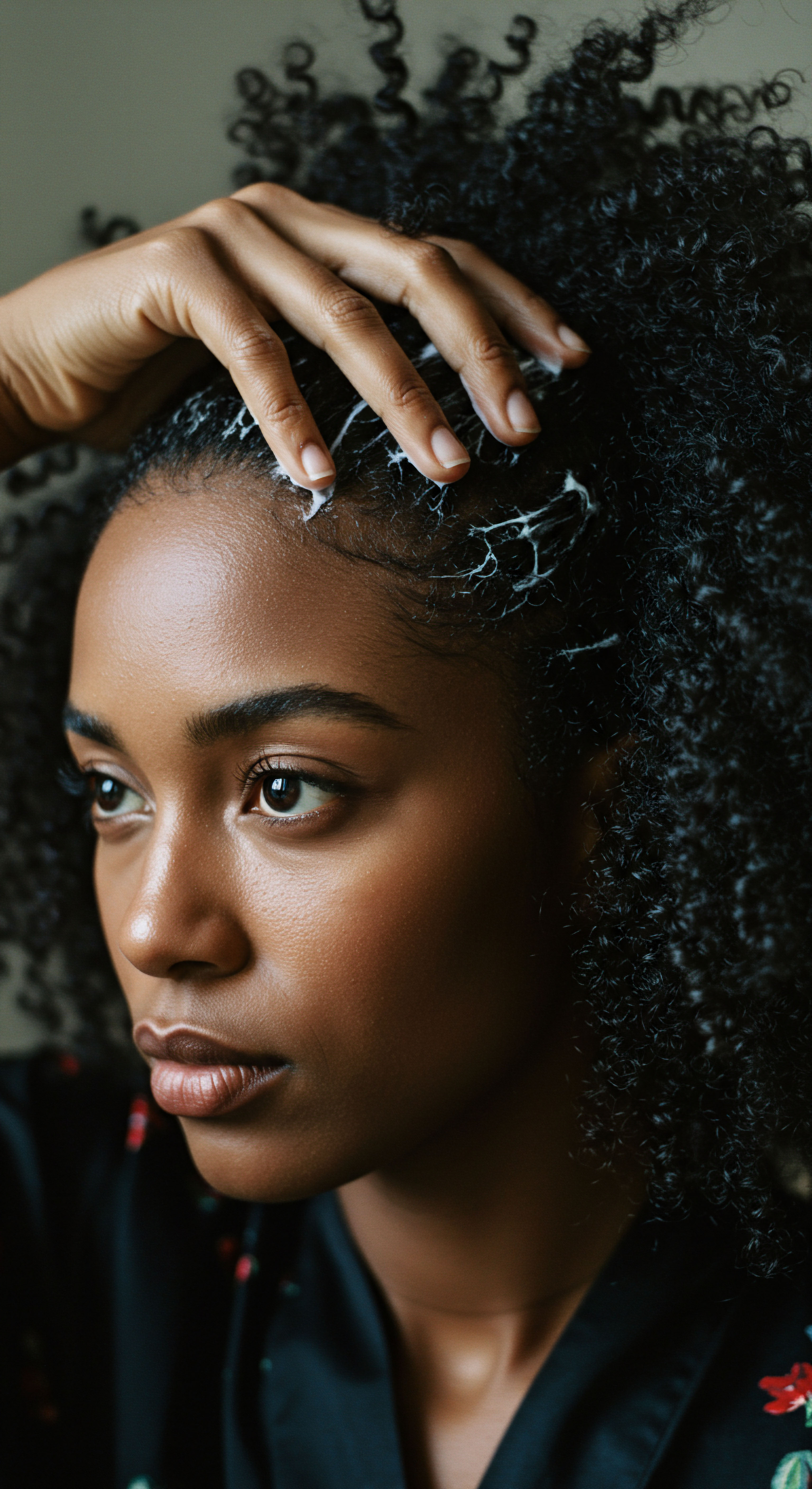
Roots
The quiet hours of slumber, a time often considered for restorative rest, hold a hidden dialogue with our textured strands. For those with coils, curls, and waves, the nightly repose can either be a gentle sanctuary or an unseen antagonist, particularly where the hair meets the sleeping surface. A curious observer might ponder the silent interactions occurring between delicate hair fibers and the fabric beneath our heads, a relationship often overlooked in the grand symphony of hair care.
This section endeavors to peel back the layers of this nocturnal interaction, revealing the fundamental principles that govern hair health, especially when considering the profound shift a silk pillowcase can bring. We journey into the very architecture of a curly strand, understanding its inherent vulnerabilities and the ways in which external elements, even something as seemingly innocuous as a pillow, can influence its well-being.

The Anatomy of a Curly Strand
A single strand of curly hair is a marvel of biological engineering, a helical structure distinct from its straighter counterparts. Its unique curvature means the cuticle, the outermost protective layer composed of overlapping scales, does not lie as flat or uniformly as on straight hair. This elevated cuticle structure, while contributing to the hair’s magnificent volume and definition, also presents a surface with increased points of contact and potential for snagging.
The scales, when lifted, are more susceptible to friction, leading to microscopic abrasions. Over time, these seemingly minor disruptions can accumulate, compromising the cuticle’s integrity and exposing the inner cortex.
Consider the Cuticle as the hair’s armor, a shimmering, translucent shield. When this shield is intact and smooth, it reflects light, lending hair its natural sheen, and acts as a barrier, preventing excessive moisture loss from the cortex. For textured hair, maintaining this cuticle alignment is a constant, delicate dance. The natural bends and twists of a curl mean that its cuticle is inherently more exposed to mechanical stress, a fact that underscores the importance of minimizing external forces that could lift or chip these protective scales.

Moisture Dynamics and Hair Health
Curly hair, by its very nature, tends to be drier than straight hair. The spiral shape of the strand makes it more challenging for natural oils, or sebum, produced by the scalp, to travel down the entire length of the hair shaft. This uneven distribution leaves the ends particularly vulnerable to dryness.
Furthermore, the raised cuticle of curly hair allows moisture to escape more readily into the surrounding atmosphere, contributing to a constant need for external hydration. The environment in which hair rests during sleep plays a significant role in this delicate moisture balance.
The inherent architecture of curly hair necessitates a careful approach to environmental interactions, particularly concerning moisture preservation.
When hair encounters absorbent fabrics, like many traditional cotton pillowcases, there is a measurable transfer of moisture from the hair to the fabric. Cotton, a hydrophilic fiber, actively draws water away. This capillary action, repeated night after night, can subtly but persistently dehydrate the hair, leaving it brittle, prone to breakage, and lacking its characteristic bounce and vitality. The cumulative effect of this moisture depletion can manifest as increased frizz, dullness, and a general decline in the hair’s overall health and manageability.

The Silent Struggle of Friction
Friction, the resistance encountered when two surfaces rub against each other, is a primary culprit in hair damage. For curly hair, this struggle is amplified. As we shift and turn during sleep, our hair is dragged across the pillowcase surface.
The microscopic irregularities of standard fabrics create a rough terrain for delicate curls, causing the hair strands to rub against each other and against the fabric. This mechanical stress can lead to tangling, knotting, and ultimately, breakage.
Research from the University of Cambridge, specifically a study by Dr. R. E. Russell and colleagues, highlighted how even subtle, repeated mechanical stress can contribute to cumulative fatigue damage in hair fibers.
Their work, published in the Journal of the Royal Society Interface, demonstrated that the cyclic deformation experienced by hair, such as that from frictional forces during sleep, can lead to micro-fractures and a reduction in the hair’s tensile strength, potentially resulting in breakage rates higher than previously considered for non-chemical stressors. This suggests that the seemingly gentle nightly interaction with a pillow can, over time, significantly compromise the structural integrity of the hair.
The continuous abrasion can also rough up the cuticle, leading to what is commonly perceived as frizz. Frizz is, at its heart, a symptom of a disrupted cuticle layer, where the scales are lifted, allowing moisture to enter and swell the hair shaft unevenly. By understanding these foundational interactions, we begin to appreciate the quiet power of the sleep surface and its capacity to either safeguard or sabotage the delicate balance of textured hair.
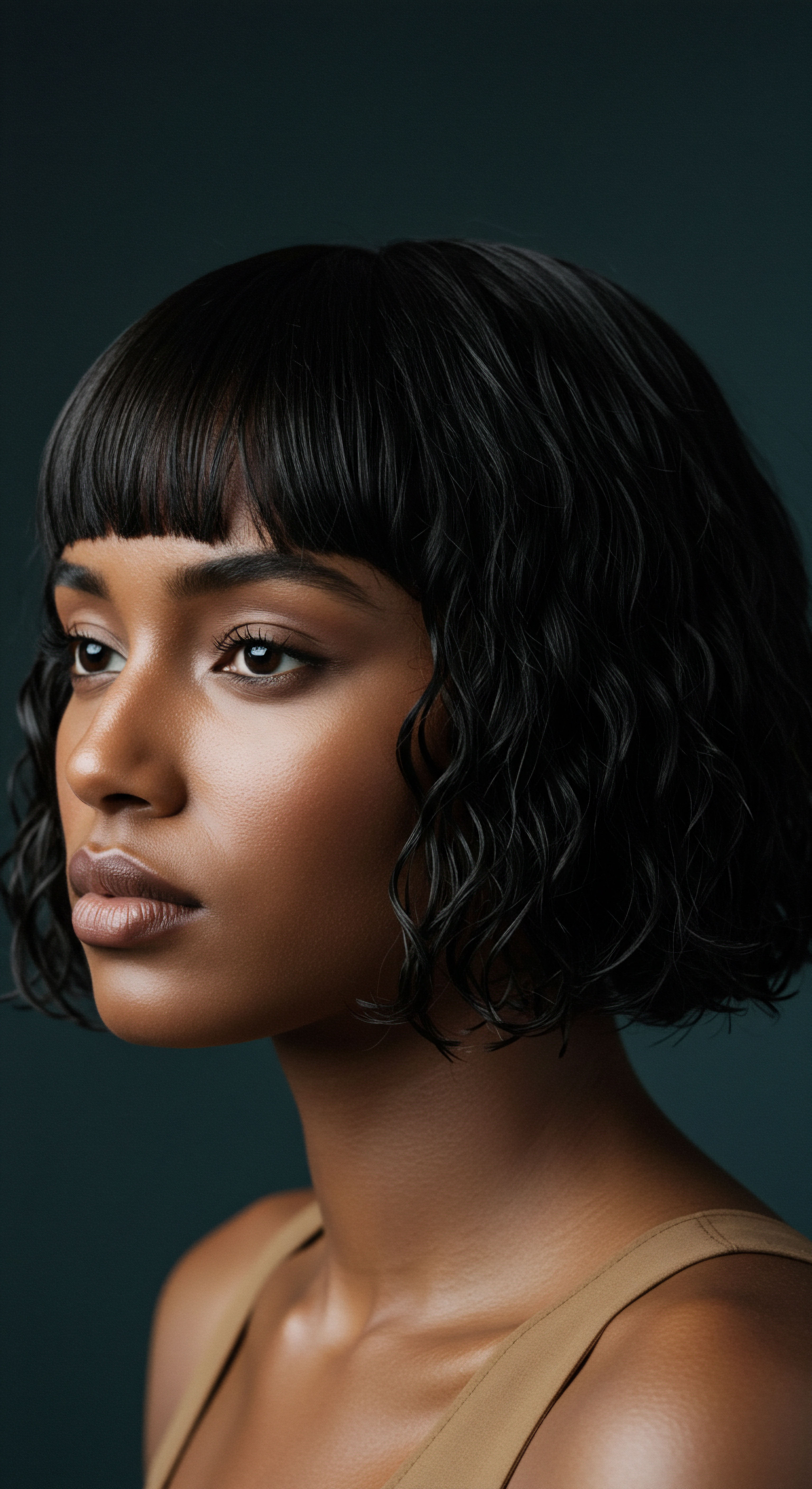
Ritual
The practice of preparing for sleep, for many, extends beyond the simple act of resting the body; it encompasses a gentle reverence for the hair that crowns us. This section invites a deeper contemplation of how our nighttime rituals, particularly the choice of a sleep surface, can become a deliberate act of preservation for curly hair. We move from the foundational understanding of hair anatomy to the practical wisdom of incorporating silk into our nightly regimen. This isn’t merely about selecting a fabric; it is about cultivating an environment that honors the unique needs of textured strands, transforming the pillow from a potential source of damage into a quiet guardian.
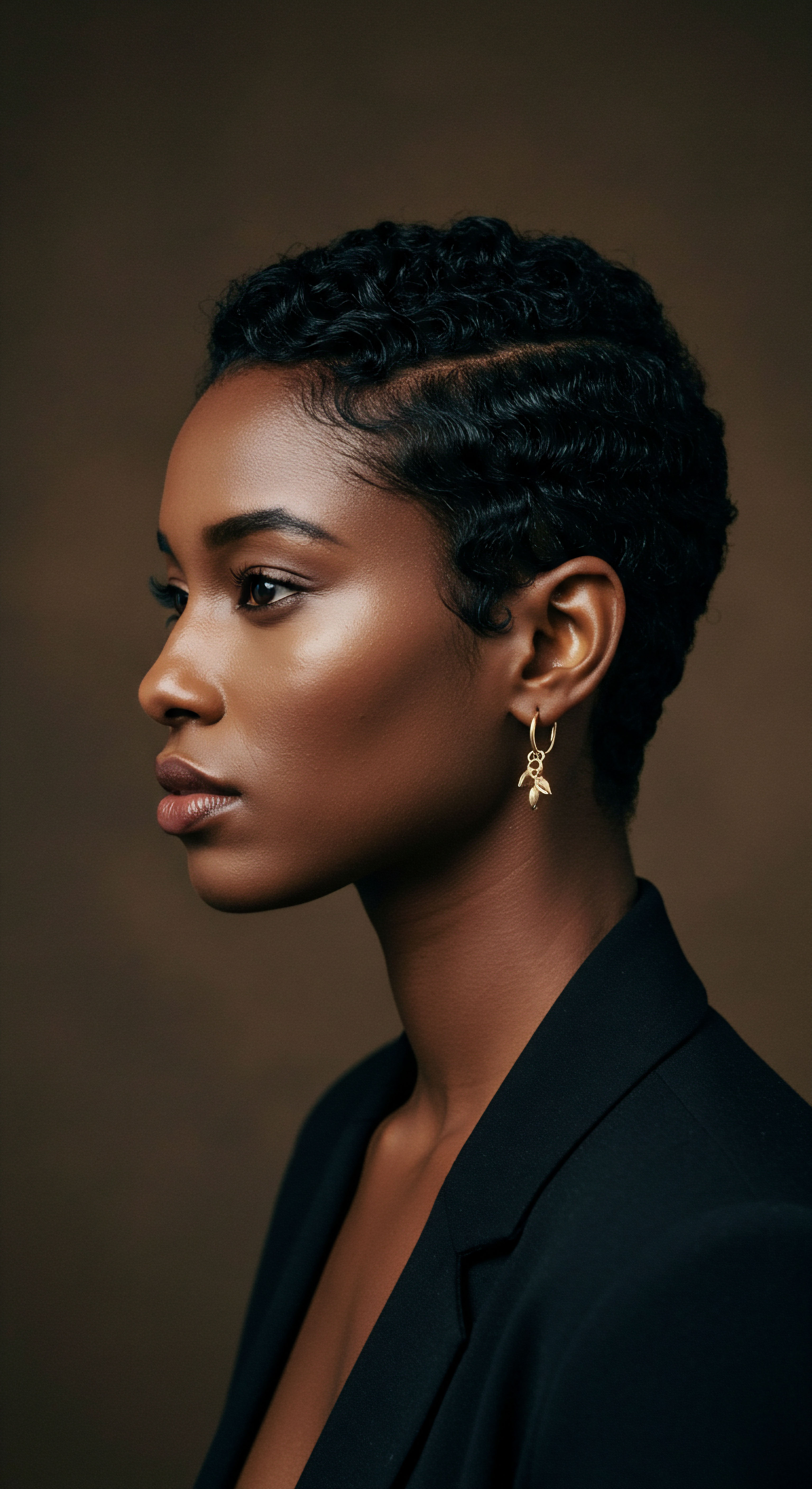
The Smooth Glide of Silk
The distinct advantage of silk pillowcases lies in the very structure of silk fibers. Unlike cotton, which possesses short, coarse fibers that can create microscopic friction points, silk is composed of long, smooth, continuous filaments. This inherent smoothness allows hair to glide effortlessly across the surface, minimizing the mechanical stress that leads to tangling and breakage. When a curly strand encounters a silk surface, it experiences significantly less resistance, preserving its natural curl pattern and reducing the likelihood of frizz.
Consider the difference in sensation ❉ imagine a hand sliding across a finely polished stone versus one moving over a textured, woven basket. The former mirrors the interaction of hair with silk; the latter, with a rougher fabric. This reduction in friction is not just a comfort; it is a critical scientific benefit that directly translates to improved hair health. By lessening the physical abrasion, silk helps maintain the integrity of the hair’s cuticle layer, keeping those delicate scales flat and aligned.

Moisture Preservation During Sleep
Beyond its frictionless qualities, silk offers a remarkable advantage in moisture retention. Silk is a protein fiber, naturally less absorbent than plant-based fibers like cotton. While cotton actively wicks away moisture from both skin and hair, silk allows the hair’s natural oils and applied products to remain where they belong ❉ on the hair itself. This non-absorbent quality is particularly beneficial for curly hair, which, as discussed, is prone to dryness.
Silk’s protein structure contributes to a less absorbent surface, aiding in the preservation of hair’s natural moisture balance during sleep.
The effect of this moisture preservation is multi-faceted. When hair retains its natural hydration, it becomes more elastic, less prone to snapping, and generally more resilient. For individuals with textured hair who invest time and resources into moisturizing products, a silk pillowcase acts as a silent partner, ensuring those efforts are not undermined by an absorbent sleep surface. This consistent hydration helps maintain the hair’s internal structure, contributing to its softness, elasticity, and overall vitality.
- Hydration Retention ❉ Silk’s less absorbent nature means moisture stays within the hair.
- Product Efficacy ❉ Hair products applied before bed remain on the strands, not absorbed by the pillow.
- Elasticity Improvement ❉ Well-hydrated hair is more pliable and less prone to snapping under stress.

Minimizing Tangles and Knots
One of the most vexing challenges for individuals with curly hair is the propensity for tangles and knots, especially after a night’s sleep. The constant movement against a rough surface causes individual strands to interlock and form stubborn knots, which then require forceful detangling, often leading to breakage. Silk pillowcases address this issue directly through their smooth surface.
The reduction in friction means hair strands are less likely to snag and intertwine. Instead, they can slide past each other with minimal resistance. This simple yet profound change significantly reduces the formation of new tangles and helps to preserve existing curl patterns.
Waking up with fewer knots means less time spent on detangling, and critically, less mechanical damage during the morning styling routine. This preventative measure contributes significantly to the long-term health and length retention of textured hair.

Does Silk Reduce Hair Breakage?
The cumulative benefits of reduced friction and improved moisture retention directly translate to a decrease in hair breakage. When the cuticle remains smooth and intact, and the hair shaft stays adequately hydrated, the hair’s tensile strength is maintained. This makes the strands more resistant to the forces that cause them to snap.
Consider the daily wear and tear our hair endures. Sleep, occupying roughly a third of our lives, represents a significant period of potential mechanical stress. By mitigating this stress with a silk pillowcase, we are effectively reducing one of the most consistent sources of hair damage.
The impact may not be immediately dramatic, but over weeks and months, the difference in hair health, length retention, and overall vitality can become remarkably apparent. It transforms the act of sleeping from a hair-damaging routine into a restorative period.

Relay
As we move deeper into the intricate dance between textured hair and its nocturnal environment, we recognize that the selection of a sleep surface is not merely a superficial choice but a profound interaction with the biomechanics of hair. This section extends our understanding beyond the immediate benefits, exploring the scientific underpinnings that connect silk pillowcases to the long-term resilience and vibrance of curly strands. We delve into the micro-level dynamics, the cultural echoes of hair protection, and the holistic impact of thoughtful care, inviting a more expansive perspective on this seemingly simple accessory.

Microscopic Effects on Hair Structure
To truly appreciate the benefits of silk, one must consider the hair at a microscopic level. The outermost layer of the hair, the cuticle, is composed of dead cells that overlap like shingles on a roof. For curly hair, these shingles are naturally more prone to lifting due to the hair’s curved structure.
When hair rubs against a rough surface, these scales are physically forced open or even chipped away. This exposes the inner cortex, leading to moisture loss, increased porosity, and ultimately, a compromised hair shaft.
Silk, with its incredibly smooth protein fibers (primarily fibroin and sericin), creates a surface that allows these delicate cuticle scales to remain flat and aligned. The reduction in the coefficient of friction between hair and silk is substantial compared to cotton. This microscopic preservation of the cuticle is the bedrock of silk’s benefits. A smooth cuticle means:
- Reduced Frizz ❉ When cuticles lie flat, the hair shaft is less prone to absorbing excess atmospheric moisture, which causes swelling and frizz.
- Enhanced Shine ❉ A smooth, intact cuticle reflects light more uniformly, lending hair a natural luminosity.
- Improved Manageability ❉ Hair with an undisturbed cuticle is less prone to tangling and easier to comb through.
The cumulative effect of this nightly preservation means less damage accumulation over time, contributing to healthier, stronger strands that are better equipped to withstand daily styling and environmental stressors.
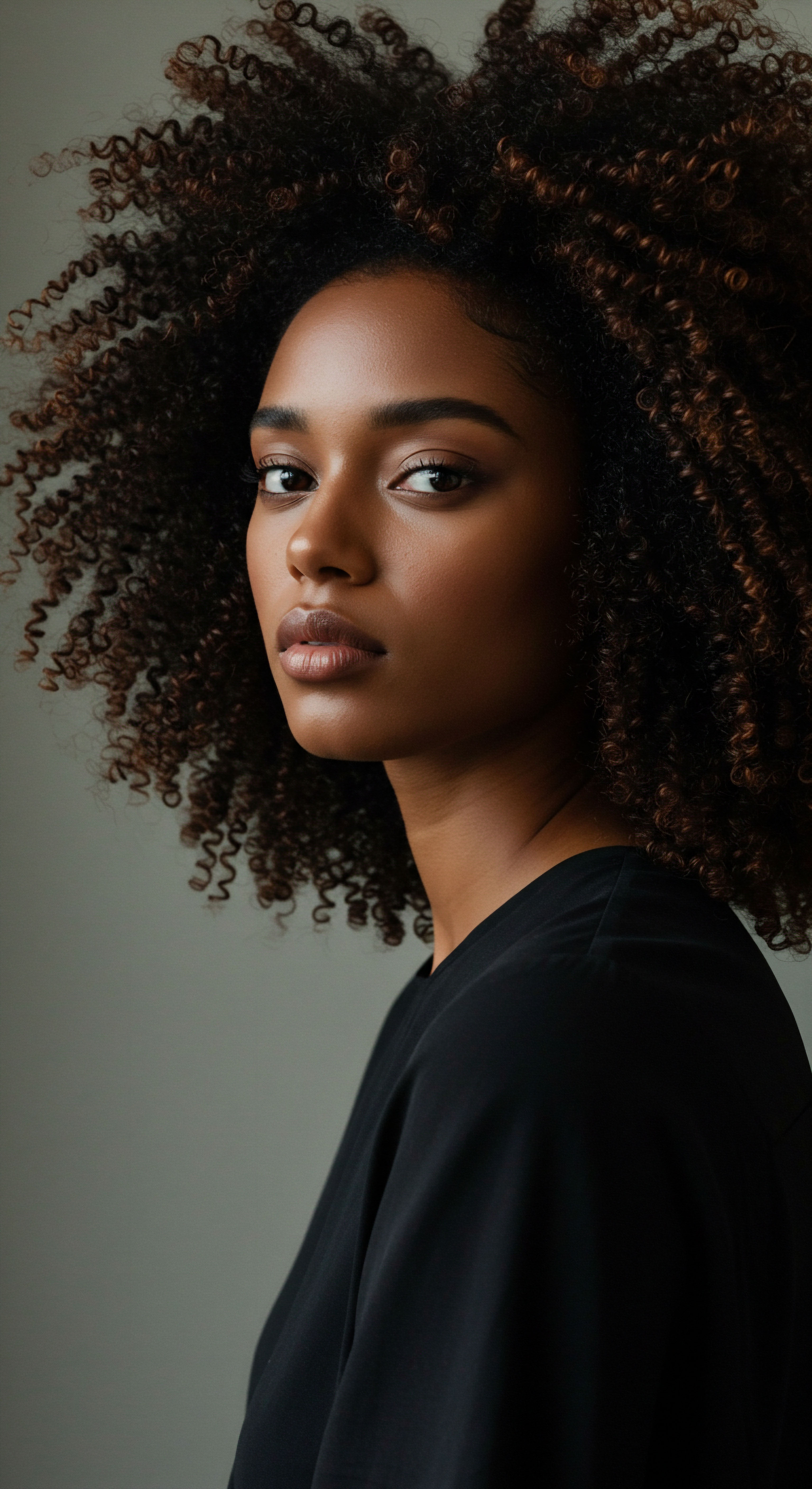
Thermo-Regulation and Hair Health
Silk possesses natural thermo-regulating properties, a subtle yet significant benefit for hair health. Unlike synthetic materials that can trap heat, silk is breathable, allowing for air circulation. This helps to maintain a more consistent temperature around the head and hair. While not a direct benefit for hair structure, a balanced scalp temperature can contribute to a healthier environment for hair follicles.
Excessive heat or sweating can sometimes lead to scalp irritation or encourage bacterial growth, which can indirectly impact hair quality. By providing a breathable sleep surface, silk contributes to a more stable microclimate for the scalp, supporting overall hair wellness.

Cultural Echoes of Hair Protection
The practice of protecting hair during sleep is not a modern invention; it echoes through various cultural traditions concerning hair care. For centuries, communities with textured hair have understood the vulnerability of their strands and developed practices to safeguard them during nocturnal rest. From intricately wrapped head coverings to specific sleep caps, these traditions intuitively grasped the need to minimize friction and preserve moisture.
| Cultural Practice Head Wraps/Scarves |
| Purpose Contain hair, reduce friction, maintain style |
| Connection to Silk Benefits Mimics silk's friction reduction, style preservation |
| Cultural Practice Bonnets (satin/silk) |
| Purpose Protect from abrasion, retain moisture |
| Connection to Silk Benefits Directly aligns with silk pillowcase benefits |
| Cultural Practice Braiding/Twisting Hair |
| Purpose Minimize tangles, reduce friction between strands |
| Connection to Silk Benefits Complements silk's ability to reduce overall friction |
| Cultural Practice These historical practices highlight a long-standing awareness of hair's fragility during sleep. |
The contemporary use of silk pillowcases can be seen as a continuation of this ancestral wisdom, translated through modern material science. It represents a conscious choice to honor the hair’s delicate nature, drawing parallels to the thoughtful rituals passed down through generations. This historical lens deepens our appreciation for silk, positioning it not just as a luxury item, but as a scientifically validated tool within a continuum of protective hair practices.
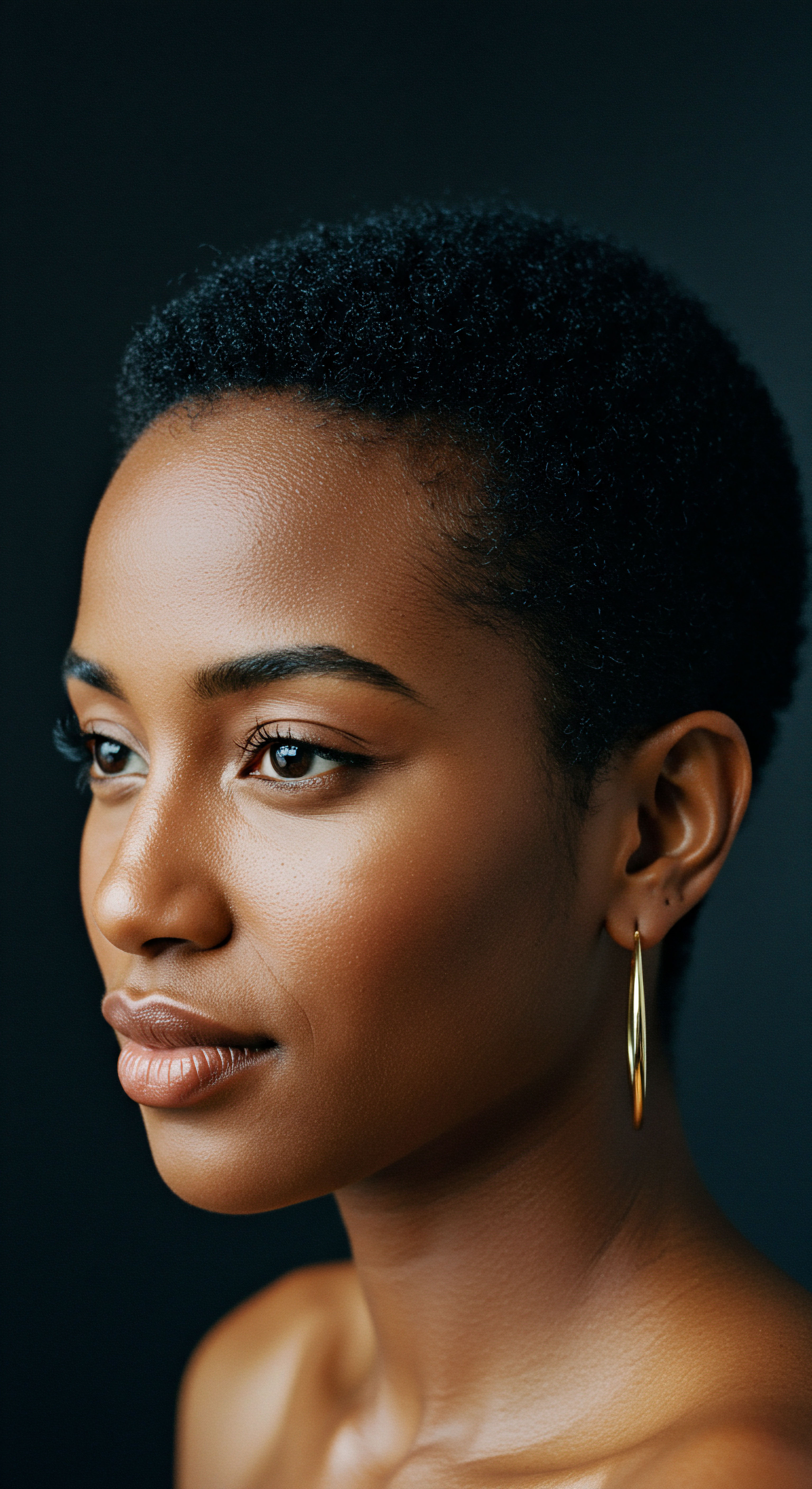
Long-Term Hair Resilience
The consistent use of a silk pillowcase contributes to the long-term resilience of textured hair. By consistently minimizing friction and supporting moisture retention, the hair experiences less cumulative damage. This translates to several measurable outcomes over time:
- Reduced Breakage ❉ Fewer micro-fractures and less cuticle damage mean strands are stronger and less likely to snap.
- Improved Length Retention ❉ When breakage is minimized, hair can grow longer and retain its length more effectively.
- Enhanced Natural Curl Pattern ❉ Less friction means curls are less disturbed and retain their definition, leading to more vibrant and consistent curl patterns.
The enduring benefits of silk pillowcases stem from their consistent ability to protect the hair’s structural integrity, fostering long-term resilience.
This approach moves beyond superficial benefits, grounding the choice of a silk pillowcase in a deeper understanding of hair biology and the biomechanics of daily life. It positions silk not as a fleeting trend, but as a considered investment in the enduring health and beauty of textured hair. The quiet night becomes a powerful ally in the journey of hair wellness, guided by the gentle touch of silk.
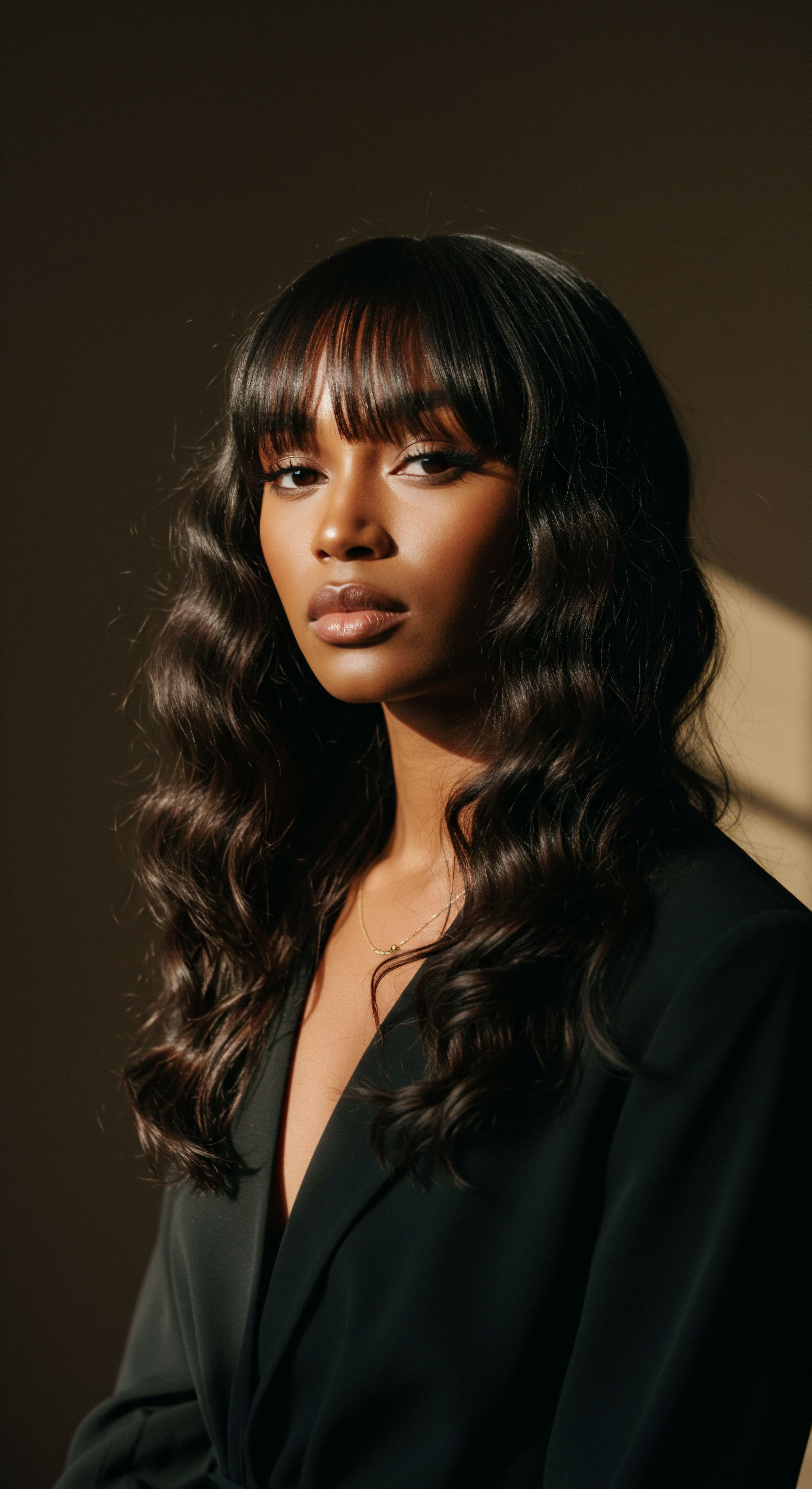
Reflection
As the soft light of morning greets us, the narrative woven around the silk pillowcase reveals itself as more than a simple story of luxury; it is a testament to the profound interplay between seemingly small choices and the enduring vitality of our hair. From the intricate architecture of a single curl to the whispers of ancient protective rituals, the scientific benefits of silk unfold with quiet grace. It is a reminder that genuine care for textured hair extends beyond washes and stylers, reaching into the silent hours of our rest.
The gentle glide of silk, the preserved moisture, the undisturbed curl—these are not mere anecdotes but measurable contributions to hair health, inviting us to reconsider the subtle yet powerful influence of our environment. The journey of hair wellness, it seems, is deeply intertwined with the sanctuary we create, even in our sleep.

References
- Russell, R. E. & Eaton, M. P. (2014). The mechanical properties of human hair ❉ A review. Journal of the Royal Society Interface, 11(99), 20140401.
- Robbins, C. R. (2012). Chemical and Physical Behavior of Human Hair (5th ed.). Springer.
- Franbourg, A. Hallegot, P. Baltenneck, F. Freyssinet, J. M. & Bouillon, C. (2003). The human hair keratin associated proteins. Experimental Dermatology, 12(Suppl 2), 1-14.
- McMichael, A. J. (2013). Hair and Scalp Disorders ❉ Medical and Surgical Management. Informa Healthcare.
- Swift, J. A. (2012). The hair shaft ❉ A structural overview. Journal of Cosmetic Science, 63(3), 159-170.
- Gavazzoni Dias, M. F. R. (2015). Hair cosmetics ❉ An overview. International Journal of Trichology, 7(1), 2-15.
- Hotz, H. (1998). Hair and fiber structure and properties. Journal of the Society of Cosmetic Chemists, 49(5), 323-332.